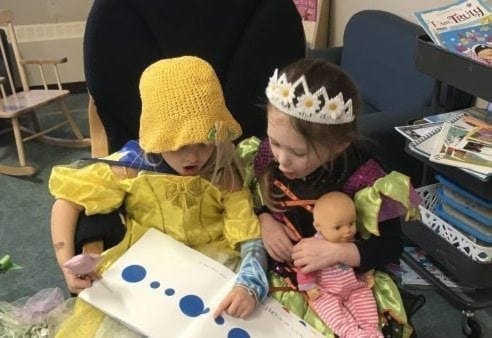Holly Beaulieu can attest to the value of junior kindergarten.

photo courtesy of Harry Camsell School
Her four-year-old son Rhett is enrolled in the program in Hay River. She has seen tremendous progress in his abilities since he started.
"Not just academically but even in is behaviour and socially. He's not as shy. He's a little more outgoing," Beaulieu said. "He's more structured, even at home with me. He knows to put away his toys. He knows how to write his name now and other words. It's just amazing what he knows."
As a full-time working mom, Beaulieu said she wouldn't be able to teach Rhett all these lessons and skills.
The junior kindergarten program, which is optional for youngsters, is in its fourth year and it carries a $5.2 million budget in 2017-18. This is the first year, however, that junior kindergarten is offered throughout the NWT. Each community's district education authority decides whether their schools will offer half- or full-day programming. This year, 26 schools are offering full-day junior kindergarten while 15 schools are offering half-day, according to the Department of Education, Culture and Employment.
In addition to early learning and socialization, junior kindergarten saves the average NWT family $10,000-$12,000 per year in childcare costs, said Rita Mueller, assistant deputy minister with the Department of Education, Culture and Employment.
"It's just the most wonderful research, evidence-based, play-based program ever out there," Mueller said.
"We're at the forefront in Canada in the kind of things we're doing for young children."
Bumpy beginnings
Not everyone is a proponent of formal, structured learning at such an early age.
"I feel like putting kids in school at three and four years old is not the right thing to do," said Julie Lys, a longtime member of the Fort Smith District Education Authority. "I think kids need to know who they are – education is a powerful thing, it's a mind-changer. Putting them in at such young ages into a system of bureaucracy is not a good thing."
In addition, Lys, like some others who spoke out when junior kindergarten was introduced, felt Aboriginal Head Start was being infringed upon by the new programming.
"I think if (education department officials) said, 'We're going to take the curriculum from Aboriginal Head Start and put that in JK, I would have bought into it a bit better," said Lys. "We do have the cultural programs here (in Fort Smith) that are really good in the community but I do wish that they had listened to us when we said, 'Can we use the curriculum from Aboriginal Head Start?' They still steamrolled it through."
In retrospect, the GNWT could have communicated in a "more meaningful and collaborative way" when initially introducing the junior kindergarten program to allay fears that Aboriginal Head Start, which exists in eight NWT communities, may be jeopardized, said Mueller.
"And that was not ever the intent," she said, adding that the education department funds Aboriginal Head Start in partnership with the federal government. "We continue to offer whatever supports we can to Aboriginal Head Start. We'll continue to fund them ... Their success is very important to us. The really exciting thing about Aboriginal Head Start is their mandate is from 0 to 6 years of age, so they can offer programming at an earlier age than junior kindergarten can.
"I really sincerely have hope for our department and Aboriginal Head Start, and now our schools, to work together in a much more cohesive and co-operative way to say, 'How do we best serve the families in these communities?' I have hope for that and I'm starting to see evidence of that."
Fact file
Expansion and participation
-In 2016-2017 20 schools opted to offer junior kindergarten (JK) programming, which resulted in 114 children enrolled. Based on the overall population of 4-year-olds within those 20 communities, the participation rate was approximately 94 per cent.
-During the current school year, the first year all schools in the NWT offer JK programming, there are 506 children enrolled. Based on the overall population of 4-year-olds in the NWT, the participation rate is approximately 85 per cent.
Source: Department of Education, Culture and Employment
Training for junior kindergarten educators since program launched:
-Indigenizing play-based learning
-Inclusive schooling
-Self-regulation
-Building language skills
-Literacy and numeracy in play-based learning
Source: Department of Education, Culture and Employment
